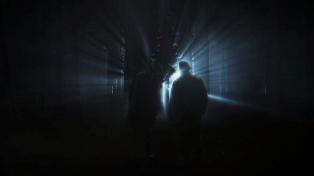Hybrid factual series Alien Mysteries deconstructed

Discovery Networks Canada president and GM Paul Lewis had a challenge to deal with when planning for the channel’s new original docu-drama series Alien Mysteries, which ends its maiden season this Sunday.
“The aliens are elusive – they don’t turn up for interviews,” Lewis had joked, ahead of the series premiere earlier this month.
Lewis said that creating a factual program that was immersive in its storytelling meant that Alien Mysteries is presented much more like a drama than a factual series.
“While we’ve used a lot of dramatization in our factual [in the past], this really is a different way of coming at that. It’s a hybrid that we had never done before, where the drama was much more integral to the show and needed to be very detailed and fit within the Discovery bounds in that it was very accurate,” Lewis told Playback.
Discovery places the budget for Alien Mysteries in the “upper-range for a docu-drama series.” While the series was a challenging undertaking from an editorial perspective, it was also new territory for the production team to create a factual program for which the dramatic storytelling elements were so integral.
So to capture the elusive subject matter, the Discovery team worked with a combination of green screens and CGI work provided by Toronto-based Acme Digital Pictures.
Lewis said the series required a lot more preproduction work, like detailed storyboarding, building set pieces and ensuring the dramatic elements matched the CGI, than with a typical factual production.
The series features real people talking about their experiences with alien encounters, and scientists who probe and explain the possibility of the encounters.
Lewis added that they had to strike a fine balance in the final product, in that the show is neither meant to make people into believers or to debunk the experiences, which he notes was refreshing.
“There’ve been so many docs done where you have this breathless voiceover about, ‘Could this be? Did it really happen this way?'” he said.
“The narration in this project is almost non-existent. What we’re presenting to them is how the participants experienced them,” he said, adding the reconstructions were backed up by painstaking approach to hard science and corroborating evidence.
Each episode took approximately six days to shoot, with three days spent shooting the recreations before adding in the other elements.
Lewis noted that using the green screen created an aggressive time efficiency, since it allowed the team to move from shooting a scene in an Iowa cornfield to a military jet over the course of a few hours.
The series was presold to Discovery in the U.K. and Europe, and Lewis says he thinks the show will have broad appeal beyond the regular Discovery audience demo.
“There is big, big buzz on this series internationally. We are currently in negotiations with several American networks,” said Tony Leadman, head of worldwide program distribution for its seller, Exploration Distribution.

 The definitive CDN broadcast and production resource.
The definitive CDN broadcast and production resource.










